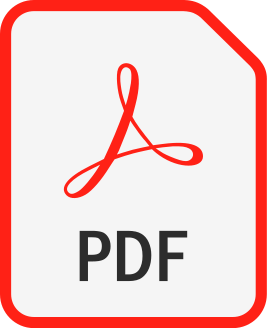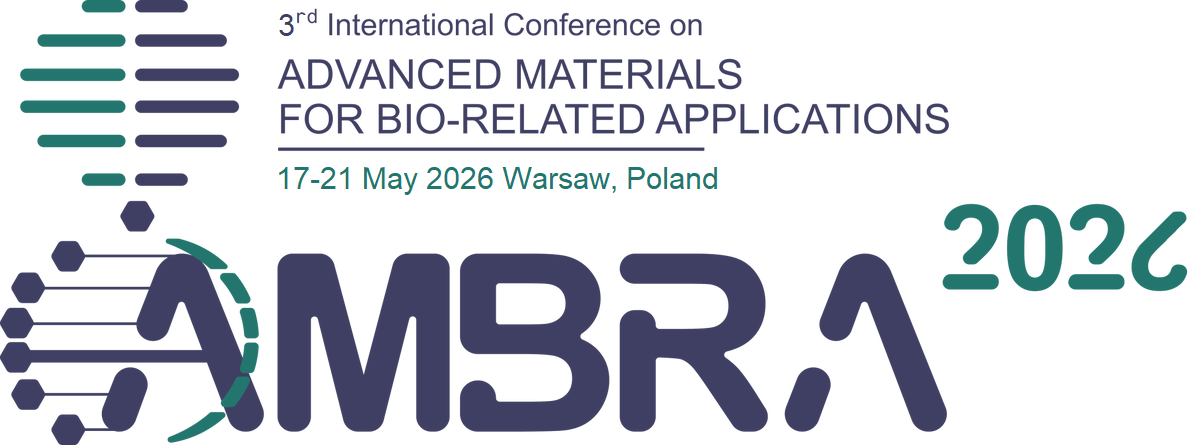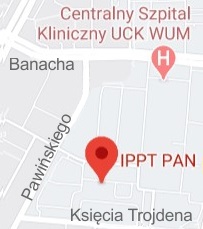| 1. |
Ropón-Palacios G.♦, Pérez-Silva J.♦, Gervacio-Villarreal E.♦, Sancho C.♦, Olivos-Ramirez G., Chenet-Zuta M.♦, Tapayuri-Rengifo K.♦, Cárdenas-Cárdenas R.♦, Navarro del Aguila I.♦, Sosa-Amay F.♦, De la Cruz-Flores M.♦, Moussa N.♦, Casillas-Muñoz F.♦, Camps I.♦, Structural basis of the tarocystatin inhibitory mechanism against papain,
International Journal of Biological Macromolecules, ISSN: 0141-8130, DOI: 10.1016/j.ijbiomac.2025.142647, Vol.308, pp.142647-1-9, 2025 Abstract:
Plant pathogens pose a severe threat to global food security by compromising the availability, quality, and safety of crops for human and animal consumption. Given the urgent need for alternatives to chemical pesticides, natural inhibitors of phytopathogenic proteases represent promising biopesticides. Tarocystatin has been characterized in Colocasia esculenta as a defense protein against phytopathogenic nematodes and fungi. Despite its biotechnological potential, few studies describe its mechanical, structural, and energetic properties. In this study, we characterized the inhibitory mechanism of tarocystatin against papain using a computational biophysics approach. Through extensive molecular dynamics (MD) and steered molecular dynamics (SMD) simulations, we explored the dynamic, energetic, structural, and mechanical basis of tarocystatin and its specific binding to papain. Our results suggest that the stability of the complex is characterized by a lack of conformational rearrangements, showing invariability in its secondary structure across all MD replicas. Additionally, electrostatic analysis revealed a high complementarity of the tarocystatin-papain complex, which was later corroborated by the hydrogen-bond network established at the complex interface, explaining its strong inhibitory capacity. Moreover, we determined that the substrate-competitive inhibitory mechanism is due to the binding ability of conserved motifs in tarocystatin, which efficiently interact with the catalytic active site of papain. This was also confirmed through SMD, where we observed that the N-terminal region acts as a spring to prevent the dissociation of the complex under external pulling forces. Overall, our study is the first to provide a comprehensive exploration of the biophysical properties of the tarocystatin-papain complex, offering insights into the tarocystatin's inhibition mechanism. These results lay the foundation for future development of tarocystatin-based antifungal alternatives, as well as for exploring its inhibitory activity in other pathogens or enhancing its efficacy through molecular engineering. Keywords:
Tarocystatin, Papain, Inhibition mechanism, Molecular dynamics, Computational biophysics Affiliations:
| Ropón-Palacios G. | - | other affiliation | | Pérez-Silva J. | - | other affiliation | | Gervacio-Villarreal E. | - | other affiliation | | Sancho C. | - | other affiliation | | Olivos-Ramirez G. | - | IPPT PAN | | Chenet-Zuta M. | - | other affiliation | | Tapayuri-Rengifo K. | - | other affiliation | | Cárdenas-Cárdenas R. | - | other affiliation | | Navarro del Aguila I. | - | other affiliation | | Sosa-Amay F. | - | other affiliation | | De la Cruz-Flores M. | - | other affiliation | | Moussa N. | - | other affiliation | | Casillas-Muñoz F. | - | other affiliation | | Camps I. | - | other affiliation |
|  |
| 2. |
Olivos Ramirez G., Cofas Vargas L. F., Tobias M.♦, Poma Bernaola A. M., Conformational and Stability Analysis of SARS-CoV-2 Spike Protein Variants by Molecular Simulation,
Pathogens, ISSN: 2076-0817, DOI: 10.3390/pathogens14030274, Vol.14, No.274, pp.1-19, 2025 Abstract:
We performed a comprehensive structural analysis of the conformational space of several spike (S) protein variants using molecular dynamics (MD) simulations. Specifically, we examined four well-known variants (Delta, BA.1, XBB.1.5, and JN.1) alongside the wild-type (WT) form of SARS-CoV-2. The conformational states of each variant were characterized by analyzing their distributions within a selected space of collective variables (CVs), such as inter-domain distances between the receptor-binding domain (RBD) and the N-terminal domain (NTD). Our primary focus was to identify conformational states relevant to potential structural transitions and to determine the set of native contacts (NCs) that stabilize these conformations. The results reveal that genetically more distant variants, such as XBB.1.5, BA.1, and JN.1, tend to adopt more compact conformational states compared to the WT. Additionally, these variants exhibit novel NC profiles, characterized by an increased number of specific contacts distributed among ionic, polar, and nonpolar residues. We further analyzed the impact of specific mutations, including T478K, N500Y, and Y504H. These mutations not only enhance interactions with the human host receptor but also alter inter-chain stability by introducing additional NCs compared to the WT. Consequently, these mutations may influence the accessibility of certain protein regions to neutralizing antibodies. Overall, these findings contribute to a deeper understanding of the structural and functional variations among S protein variants. Keywords:
Molecular Dynamics, Conformational space, Native contact map, Probability states, Collective variables, Protein stability, SARS-CoV-2 Affiliations:
| Olivos Ramirez G. | - | IPPT PAN | | Cofas Vargas L. F. | - | IPPT PAN | | Tobias M. | - | other affiliation | | Poma Bernaola A. M. | - | IPPT PAN |
|  |
| 3. |
Loayza-Aguilar R. E.♦, Saldaña-Rojas G. B.♦, Merino F.♦, Olivos Ramirez G., Biofouling reduction by lantern nets exchange and its relationship with production and survival of Argopecten purpuratus in Samanco Bay, Peru,
Journal of the World Aquaculture Society, ISSN: 0893-8849, DOI: 10.1111/jwas.70054, Vol.56, No.5, pp.e70054-1-29, 2025 Abstract:
The aquaculture of Argopecten purpuratus (Peruvian scallop) is a profitable activity with positive impacts on the local economy. However, the development of biofouling on the culture lantern nets generates negative environmental impacts that affect its sustainability. A feasible option aimed at reducing the development of biofouling is to increase the frequency of lantern nets exchange. In this study, we tested whether doubling the lantern net exchange frequency in the final phase of culture reduces biofouling and, in turn, improves the growth and survival of A. purpuratus. For this purpose, in the concession of a company dedicated to the cultivation of A. purpuratus in Samanco Bay, Peru, four 10-floor lantern nets were placed at 25 organisms per floor, divided into two treatments (T1 and T2) with two replicates. One group of these (T1) was exchanged after 30 days, and another group (T2) was maintained until harvest. As a result of the lantern nets exchange, biofouling weight was reduced by 64.6%, survival improved by 10.8%, gonad weight increased by 52.5%, and adductor muscle weight increased by 62.4%, which represents an additional net income of 6582.58 US$ per ha. This study demonstrates the significant benefits of regular lantern net exchanges in mitigating biofouling and enhancing the overall yield and economic viability of A. purpuratus culture, contributing to the advancement of more sustainable aquaculture practices. Keywords:
Argopecten purpuratus, biofouling, lantern nets, marine cultivation, profitability Affiliations:
| Loayza-Aguilar R. E. | - | other affiliation | | Saldaña-Rojas G. B. | - | other affiliation | | Merino F. | - | other affiliation | | Olivos Ramirez G. | - | IPPT PAN |
|  |
| 4. |
Cofas Vargas L. F., Olivos-Ramirez G. E., Chwastyk M.♦, Moreira R.A.♦, Baker J. L.♦, Marrink S. J.♦, Poma Bernaola A.M., Nanomechanical footprint of SARS-CoV-2 variants in complex with a potent nanobody by molecular simulations,
NANOSCALE, ISSN: 2040-3364, DOI: 10.1039/D4NR02074J, Vol.16, No.40, pp.18824-18834, 2024 Abstract:
Rational design of novel antibody therapeutics against viral infections such as coronavirus relies on surface complementarity and high affinity for their effectiveness. Here, we explore an additional property of protein complexes, the intrinsic mechanical stability, in SARS-CoV-2 variants when complexed with a potent antibody. In this study, we utilized a recent implementation of the GōMartini 3 approach to investigate large conformational changes in protein complexes with a focus on the mechanostability of the receptor-binding domain (RBD) from WT, Alpha, Delta, and XBB.1.5 variants in complex with the H11-H4 nanobody. The analysis revealed moderate differences in mechanical stability among these variants. Also, we identified crucial residues in both the RBD and certain protein segments in the nanobody that contribute to this property. By performing pulling simulations and monitoring the presence of specific native and non-native contacts across the protein complex interface, we provided mechanistic insights into the dissociation process. Force-displacement profiles indicate a tensile force clamp mechanism associated with the type of protein complex. Our computational approach not only highlights the key mechanostable interactions that are necessary to maintain overall stability, but it also paves the way for the rational design of potent antibodies that are mechanostable and effective against emergent SARS-CoV-2 variants. Keywords:
SARS-CoV-2, GōMartini 3, Nanomechanics, Protein complexes, protein engineering, MD, native contacts Affiliations:
| Cofas Vargas L. F. | - | IPPT PAN | | Olivos-Ramirez G. E. | - | IPPT PAN | | Chwastyk M. | - | Institute of Physics, Polish Academy of Sciences (PL) | | Moreira R.A. | - | other affiliation | | Baker J. L. | - | The College of New Jersey (US) | | Marrink S. J. | - | other affiliation | | Poma Bernaola A.M. | - | IPPT PAN |
|  |
| 5. |
Loayza-Aguilar Rómulo E.♦, Carhuapoma-Garay J.♦, Ramos-Falla K.♦, Saldaña-Rojas Guillermo B.♦, Huamancondor-Paz Yolanda P.♦, Campoverde-Vigo L.♦, Merino F.♦, Olivos-Ramirez G. E.♦, Epibionts affect the growth and survival of Argopecten purpuratus (Lamarck, 1819) cultivated in Samanco Bay, Peru,
Aquaculture, ISSN: 0044-8486, DOI: 10.1016/j.aquaculture.2023.740042, Vol.578, pp.740042-1-10, 2024 Abstract:
Argopecten purpuratus, a mollusk very cultivated in Peru, is a species whose ecological relations with respect to the epibionts that colonize it are not well known. For that reason, the objective of this research was to determine the effect of epibionts on valvar growth, total weight, gonad weight, adductor muscle weight, and survival of this cultured species in Samanco Bay. Four lanterns of 2 m and 10 floors were placed with 25 organisms, of 7 cm each, per floor, in two treatments: with epibiont removal (T1) and without removal (T2). The data was obtained after harvest, and the epibiont species on the right and left valves were identified and quantified in T1 and T2. In addition, the Absolute Growth Rate (AGR) was calculated for the meristic records, and the t Student test was applied to compare averages. Furthermore, mortality was recorded at harvest. The analyses allowed the identification of 43 epibiont species, 3 of them endolithic. The greatest biomass is of filter feeders: 70.1% in T1 and 90.9% in T2, and concentrated in 4 species, with limited development in T1. The biomass on the right valve at T1 and T2 represented 80.7 and 151.8% of the weight of the organism, respectively, and on the left valve 89.3 and 95.1%. All Absolute Growth Rates at T1 were higher than at T2, although without statistical significance. Mortality at T1 and T2 was negligible. This research has determined that the epibionts S. patagonicus, C. intestinalis, Hidroydes sp., and B. neritina, qualified as engineered species, are the predominant species on A. purpuratus in suspended cultures. Likewise, treatments with epibiont removal showed a lower development of these and 39 other associated species of lesser importance in terms of number and biomass. Our results allow us to infer that the development of epibionts can generate important stress in A. purpuratus, resulting in losses in the profitability of companies dedicated to this activity. Keywords:
Argopecten purpuratus, Aquaculture, Epibiosis, Biofouling, Bivalve Affiliations:
| Loayza-Aguilar Rómulo E. | - | other affiliation | | Carhuapoma-Garay J. | - | other affiliation | | Ramos-Falla K. | - | other affiliation | | Saldaña-Rojas Guillermo B. | - | other affiliation | | Huamancondor-Paz Yolanda P. | - | other affiliation | | Campoverde-Vigo L. | - | other affiliation | | Merino F. | - | other affiliation | | Olivos-Ramirez G. E. | - | other affiliation |
|  |
| 6. |
Otazu K.♦, Olivos Ramirez G.♦, Fernández-Silva P.♦, Vilca-Quispe J.♦, Vega-Chozo K.♦, Jimenez-Avalos G.♦, Chenet-Zuta M. E.♦, Sosa-Amay F. E.♦, Cárdenas Cárdenas R. G.♦, Ropón-Palacios G.♦, Dattani N.♦, Camps I.♦, The Malaria Box molecules: a source for targeting the RBD and NTD cryptic pocket of the spike glycoprotein in SARS-CoV-2,
Journal of Molecular Modeling, ISSN: 1610-2940, DOI: 10.1007/s00894-024-06006-y, Vol.30, pp.217-1-21, 2024 Abstract:
Context
SARS-CoV-2, responsible for COVID-19, has led to over 500 million infections and more than 6 million deaths globally. There have been limited effective treatments available. The study aims to find a drug that can prevent the virus from entering host cells by targeting specific sites on the virus’s spike protein.
Method
We examined 13,397 compounds from the Malaria Box library against two specific sites on the spike protein: the receptor-binding domain (RBD) and a predicted cryptic pocket. Using virtual screening, molecular docking, molecular dynamics, and MMPBSA techniques, they evaluated the stability of two compounds. TCMDC-124223 showed high stability and binding energy in the RBD, while TCMDC-133766 had better binding energy in the cryptic pocket. The study also identified that the interacting residues are conserved, which is crucial for addressing various virus variants. The findings provide insights into the potential of small molecules as drugs against the spike protein. Keywords:
SARS-CoV-2, Molecular docking, Spike protein, Cryptic pocket, MMPBSA Affiliations:
| Otazu K. | - | other affiliation | | Olivos Ramirez G. | - | other affiliation | | Fernández-Silva P. | - | other affiliation | | Vilca-Quispe J. | - | other affiliation | | Vega-Chozo K. | - | other affiliation | | Jimenez-Avalos G. | - | other affiliation | | Chenet-Zuta M. E. | - | other affiliation | | Sosa-Amay F. E. | - | other affiliation | | Cárdenas Cárdenas R. G. | - | other affiliation | | Ropón-Palacios G. | - | other affiliation | | Dattani N. | - | other affiliation | | Camps I. | - | other affiliation |
|  |






















